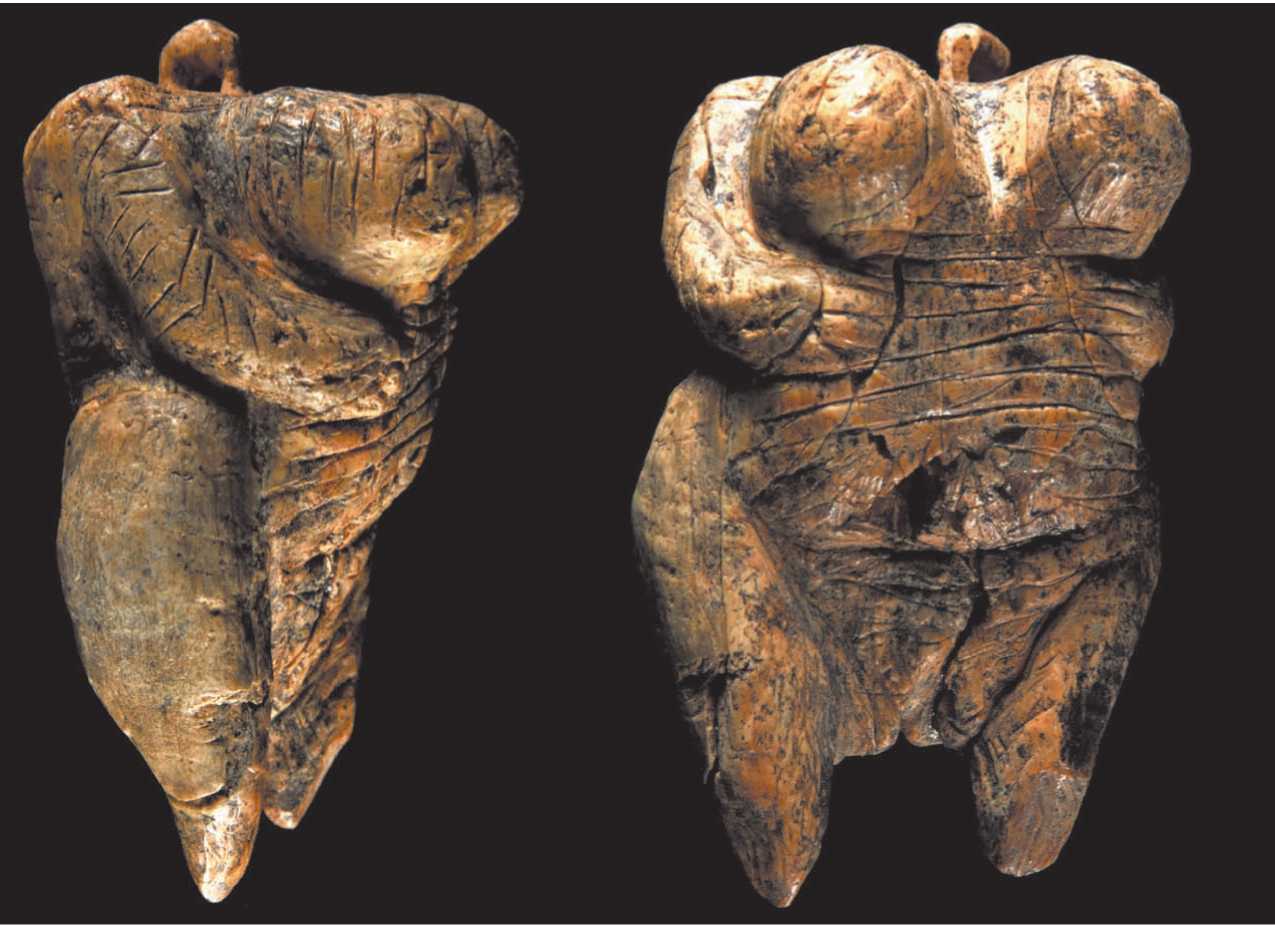For Middle Paleolithic Homo, cultural adaptive abilities relate to the fact that brain size was comparable to that of people living today. Archaeological evidence indicates sophisticated technology, as well as conceptual thought of considerable complexity, matching the increased cranial capacity. During this same time period, large-brained individuals with skulls with an anatomically modern shape began to appear. The earliest specimens with this skull shape—a more vertical forehead, diminished brow ridge, and a chin—appear first in Africa and later in Asia and Europe. Whether the derived features in the skull indicate the appearance of a new species with improved cultural capabilities remains a hotly debated question.
The transition from the Middle Paleolithic to the tools of the Upper Paleolithic occurred around 40,000 years ago, some 100,000 years or so after the appearance of the first anatomically modern specimens in Africa. The Upper Paleolithic is known not only for a veritable explosion of tool industries, but also for clear artistic expression preserved in representative sculptures, paintings, and engravings (see Chapter 9). But the earliest anatomically modern humans, like the Neandertals and other archaic forms, used tools of the Middle Paleolithic traditions.
The relationship between cultural developments of the Upper Paleolithic and underlying biological differences between anatomically modern humans and archaic forms remains one of the most contentious debates in paleoanthropology. Discussions concerning the fate of the Neandertals and their cultural abilities are integral to this debate. Whether or not a new kind of human—anatomically modern with correspondingly superior intellectual and creative abilities—is responsible for the cultural explosion of the Upper Paleolithic is considered in Chapter 9.
Is in ornamental plumage to the peahen.” How were the cultural norms of Darwin’s time reflected in his statement? Can 21st-century paleoanthropologists speak about differences between the sexes in evolutionary contexts without introducing their own cultural biases?
4. Animals ranging from rabbits to plants have come to occupy new niches without the benefits of culture. Was the spread of Homo out of the African continent possible without the benefit of culture?
5. Though language itself does not “fossilize,” the archaeological and fossil records provide some evidence of the linguistic capabilities of our ancestors. Using the evidence available, what sort of linguistic abilities do you think early Homo possessed?
Corballis, M. C. (2003). From hand to mouth: The origins of human language. Princeton, NJ: Princeton University Press. This book, written by a psychologist, takes the position that facial and manual gestures rather than vocalization are key to the development of language. It brings data from linguistics, molecular genetics, animal behavior, psychology, and neurology to the anthropological question of when human language arose.
Delson, E., Tattersal, I., Brooks, A., & Van Couvering, J. (1999). Encyclopedia of human evolution and prehistory. New York: Garland.
Using an A to Z format, this user-friendly encyclopedia includes over 800 entries relating to human evolution and prehistory. It includes excellent diagrams, illustrations, and descriptions of key archaeological sites.
Potts, R. (1997). Humanity’s descent: The consequences of ecological instability. New York: Avon.
Written by the director of the Smithsonian Institution’s Human Origins Program, this book suggests that environmental instability was the unifying factor contributing to the acquisition of human language and culture.
Stanford, C. B. (2001). The hunting apes: Meat eating and the origins of human behavior. Princeton, NJ: Princeton University Press.
Though updated and less gender biased, this work revisits the old “man the hunter” hypothesis, suggesting that human intelligence is linked to the acquisition of meat and food sharing.
Walker, A., & Shipman, P. (1997). The wisdom of the bones: In search of human origins. New York: Vintage.
This book provides an engaging description of the discovery of the most complete Homo erectus specimen—the Narioko-tome Boy from Lake Turkana, Kenya—as well as placing it within the context of the larger story of human evolution.
Zihlman, A. (2001). The human evolution coloring book. New York: Harper Resources.
Do not be deceived by the title or the book’s visual hands-on format. This book provides an authoritative scientific approach to all aspects of the study of human evolution.
Challenge Issue This tiny 35,000-year-old “Venus” figurine (about the size and weight of a small cluster of grapes), recently discovered in the archaeologically rich Hohle Fels Cave in southwestern Germany and associated with the assumed earliest presence of undisputed Homo sapiens in Europe, changed paleoanthropological interpretations of the origins of figurative art. Prior to this discovery, the earliest figurative art had included only representations of animals; female figurines did not appear until about 30,000 years ago. The exaggerated breasts and vulva and stylized markings on this carving, as on similar prehistoric statuettes known as Venus figurines, indicate the importance of female fertility to our ancestors. Did our ancestors worship the power of females to give birth? Do these figurines represent our ancestors’ attempts to connect groups of people to one another across time and space? Such creations suggest that humans, as a thoughtful and self-reflecting species, have always faced the challenge of understanding where and how we fit in the larger natural system of all life forms, past and present. In turn, these figurines challenge us to weigh whether a biological change was at the root of this creative expression, which would have separated these ancestors from the archaic Homo sapiens that came before them.





 World History
World History









